The Floating Houses of the Future are Already Being Built
In the Netherlands, barriers have been used for centuries to prevent the sea from engulfing the land.
But another movement is asking whether the future is instead fluid – and experimenting with floating parks, farms and offices.
‘It’s about living with the water,’ says Rutger de Graaf at Blue 21.
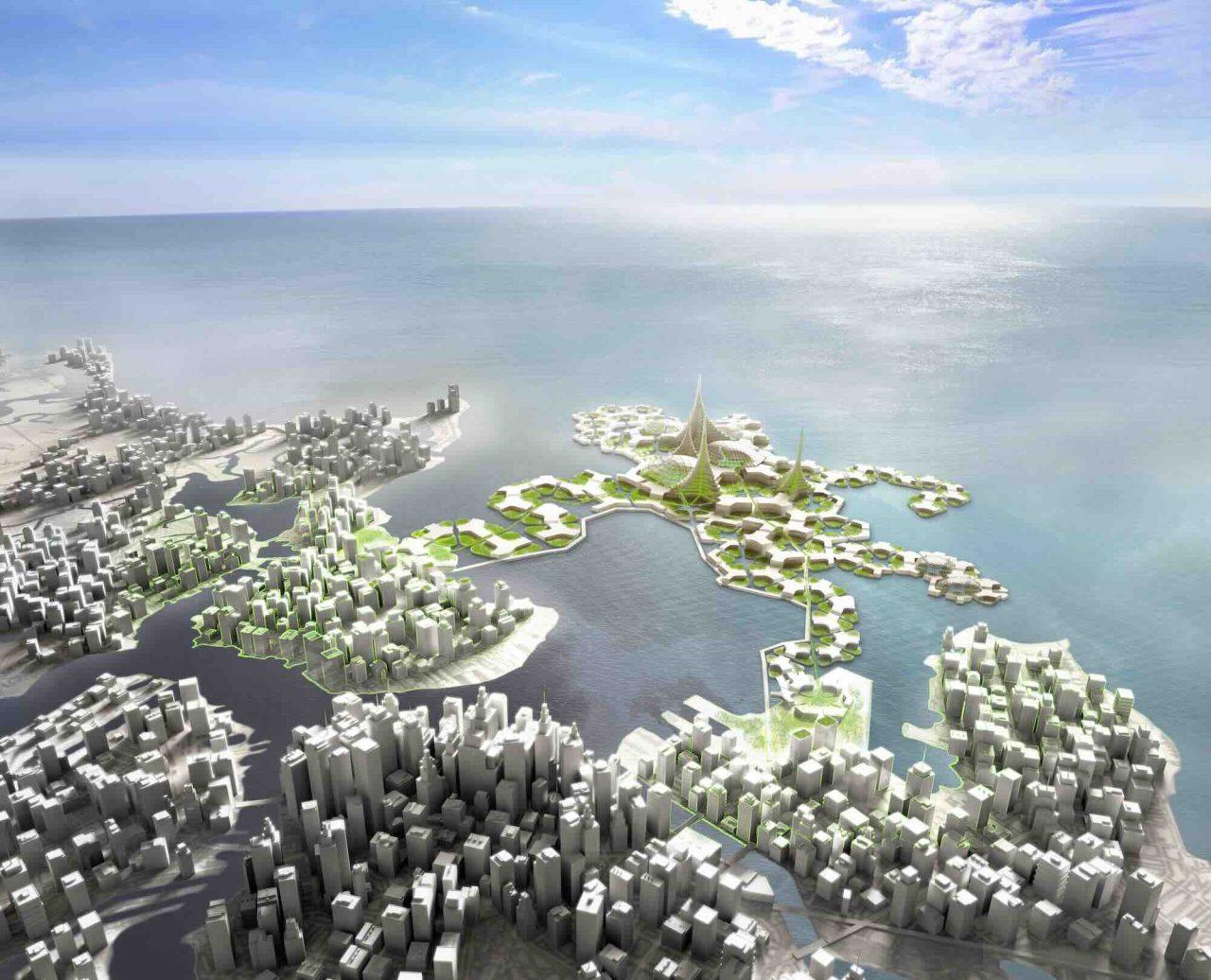
The Dutch consultants at Blue 21 believe that the cities of the future will feature a mix of floating and fixed housing. But not everyone is equally convinced.
Two-metre-high glass windows let in plenty of light into the stylish living room. Outside, the water surface ripples in the small pond. Martha Vintges and Gert Engbers have lived here since 2013, in a floating villa in the Dutch city of Delft.
‘We are interested in modern design, sustainability and the problems we have in the Netherlands with lack of space. We were looking for an adventure – and that’s what we got,’ says Martha Vintges.
Above all, it is the light that is special about living on the water. Light reflects off the surface, allowing it to penetrate from almost every direction. And the hassle. Because it has not been super easy to be pioneers in settling on a floating structure.

Martha Vintges and Gert Engbers have been living in their floating villa in Delft since 2013. There have been quite a few practical problems, but they are very happy in the house itself.
Vulnerable to flooding
In another part of Delft, there’s a tech company called Blue 21, which specialises in floating buildings. A big chunk of the Netherlands is below sea level, and for centuries, the country has been defending itself against the sea, mostly with different kinds of dams and dykes. CEO Rutger de Graaf has been thinking for a while about whether there’s another way to tackle the problem.
‘Most cities in the world are located along the coast. Space is often limited, and as they grow, areas often become vulnerable to flooding. Our alternative allows cities to expand on the water, enabling them to adapt and become more resilient to extreme weather events,’ he says.
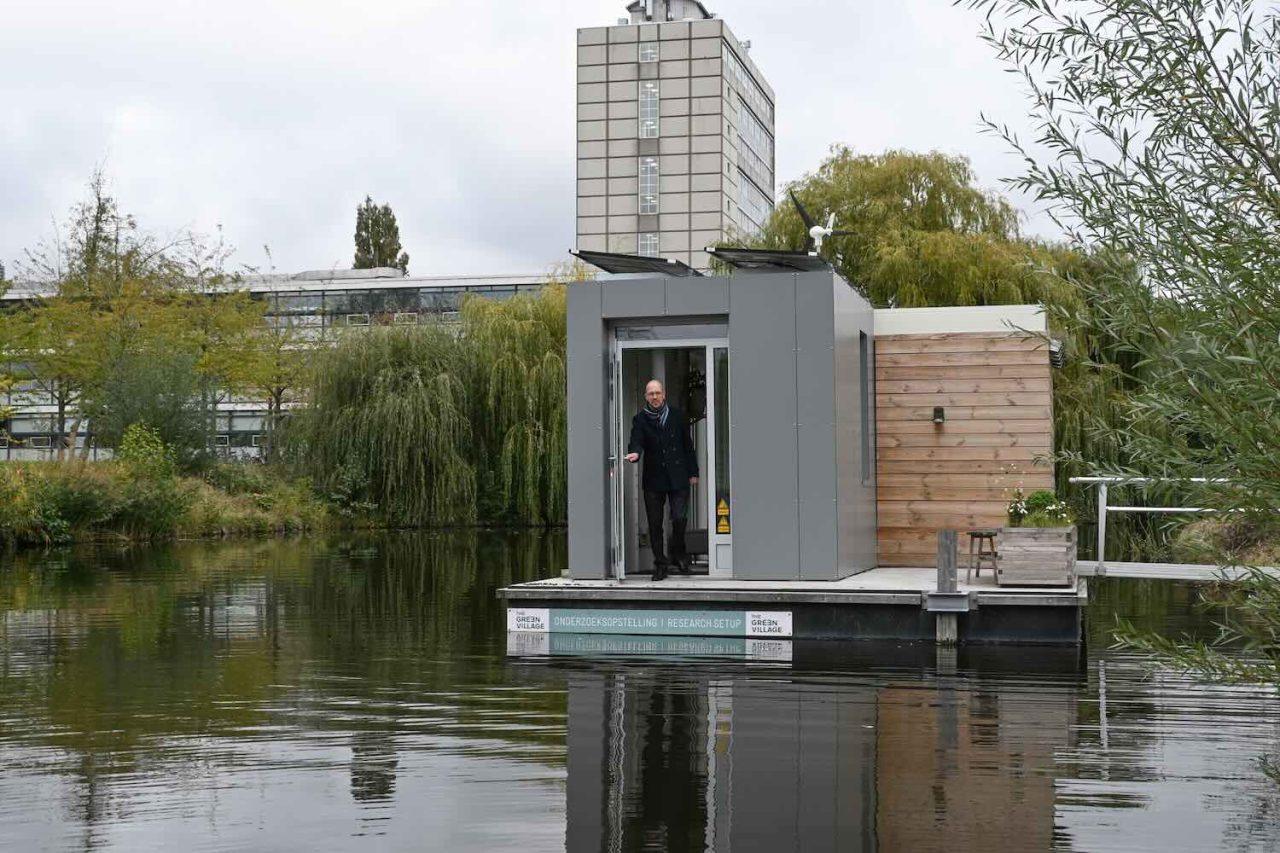
Operations Manager Rutger de Graaf is one of the founders of Blue 21, which specialises in floating communities.
The company is involved in a wide range of projects around the world, not least in Rotterdam, a short train journey away. The city is sandwiched between Europe’s largest river delta and the North Sea. In 1953, parts of the city were flooded when the country was hit by a major flood disaster, killing 1,800 people.
Cows on the water
Rotterdam has become a testing ground for floating structures. Among other things, there is a barn with cows, housing and a small floating park.
‘The city’s plans include not just a few floating homes, but large-scale apartment complexes,’ says de Graaf.
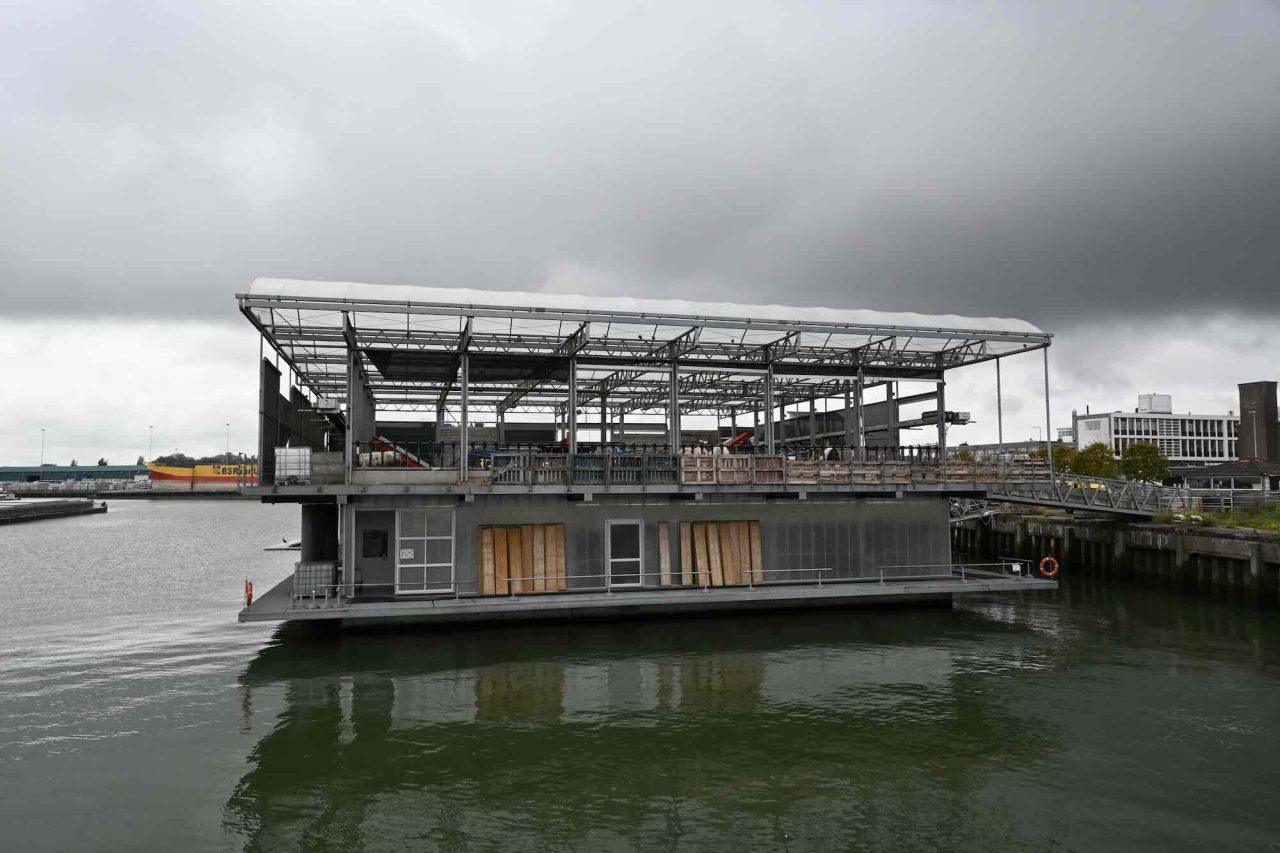
A floating farm in the middle of a big city sounds unreal, but in Rotterdam there is a small business with a couple of dozen cows upstairs and a production facility downstairs. The farm’s own products are sold in a nearby shop (which is on dry land, however).
Blue 21 has been involved in a dome-shaped pavilion in the city, which is used for various events.
It was the first large-scale public building in the world that floated. It is not connected to the sewage system, but instead treats and purifies its own water.
Architect Albert Takashi Richters at Powerhouse works in the Floating Office Rotterdam, which he helped design. The three-storey wooden building is held in place by two large pillars and rises or falls 1.5 metres per day due to the tides.
‘We wanted to construct a very elegant building that demonstrates how you can build in an extremely sustainable manner.’
One half of the roof is covered with solar panels, while the other half is a green surface that is energy efficient, collects rainwater and reduces noise. The water itself is also used to cool the house on hot summer days and heat it on chilly winter mornings.
Powerhouse usually designs buildings on land. Despite this, the process went smoothly.
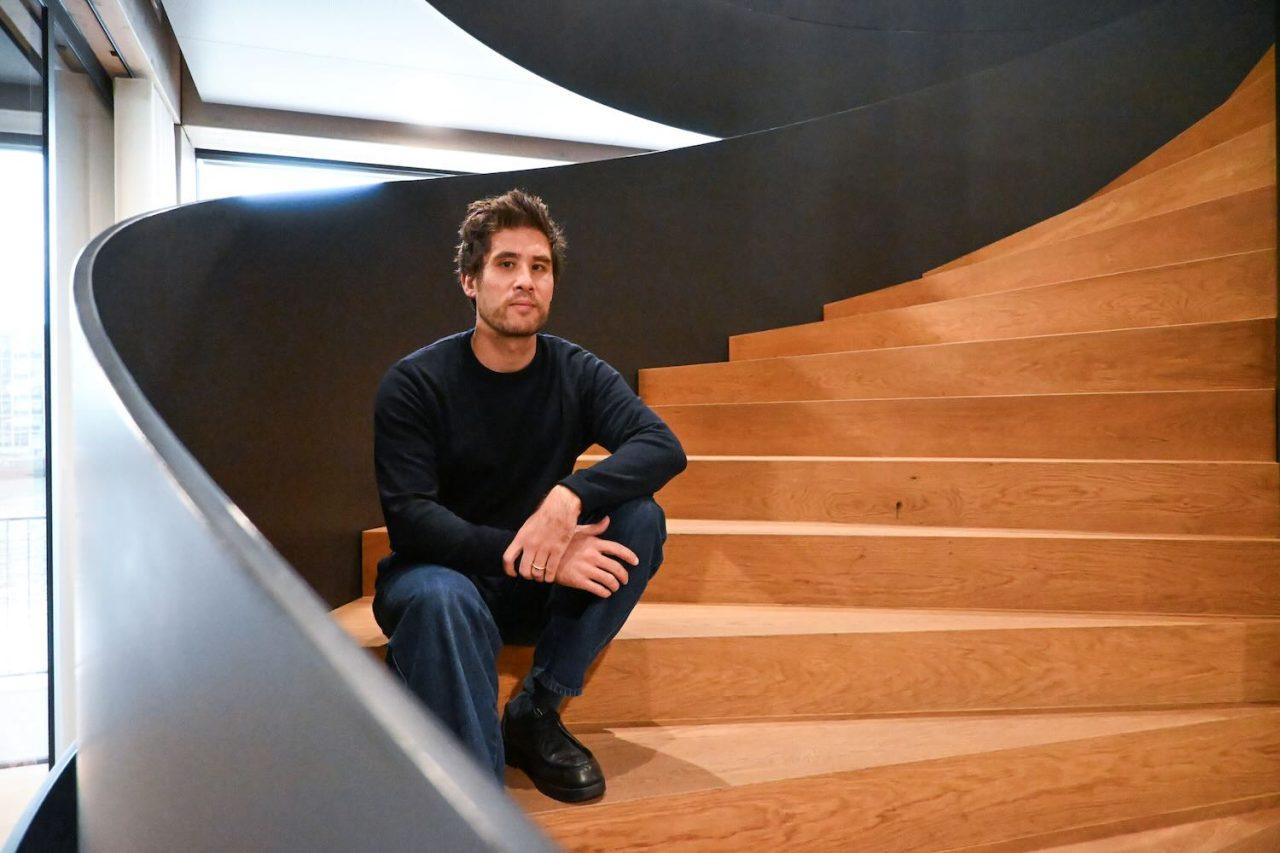
The floating office is largely constructed of wood. ‘It’s sustainable, but it also makes sense to build on water because it’s much lighter than steel and concrete,’ says Albert Takashi Richters, architect at Powerhouse Company in Rotterdam.
‘We delivered in basically 18 months from the first draft to the building being weatherproofed. It was a big challenge, but it is doable. We used a modular system that is easy to recreate,’ he says.
‘Too much freak show’
Waterstudio has its office in an unassuming, some might even say dreary, residential area in Rijswijk. In contrast to its surroundings, the visions created here are all the more captivating. A large map shows a lagoon in the Maldives, where 5,000 floating homes form intricate patterns between the surrounding sand dunes on the atoll.
‘We are actually building the first 60 in Sri Lanka right now, which will be towed over,’ says CEO and founder Koen Olthuis.

One of the first houses, developed by Dutch Docklands Maldives and designed and planned by Waterstudio, is being transported to the Maldives. Press image.
With hundreds of floating buildings in its portfolio, Waterstudio has been involved in various floating projects for almost a quarter of a century.
‘But it’s too much of a crazy architectural freak show. They’re nice, floating villas, but they’re not the answer to climate change or urban congestion,’ he says.
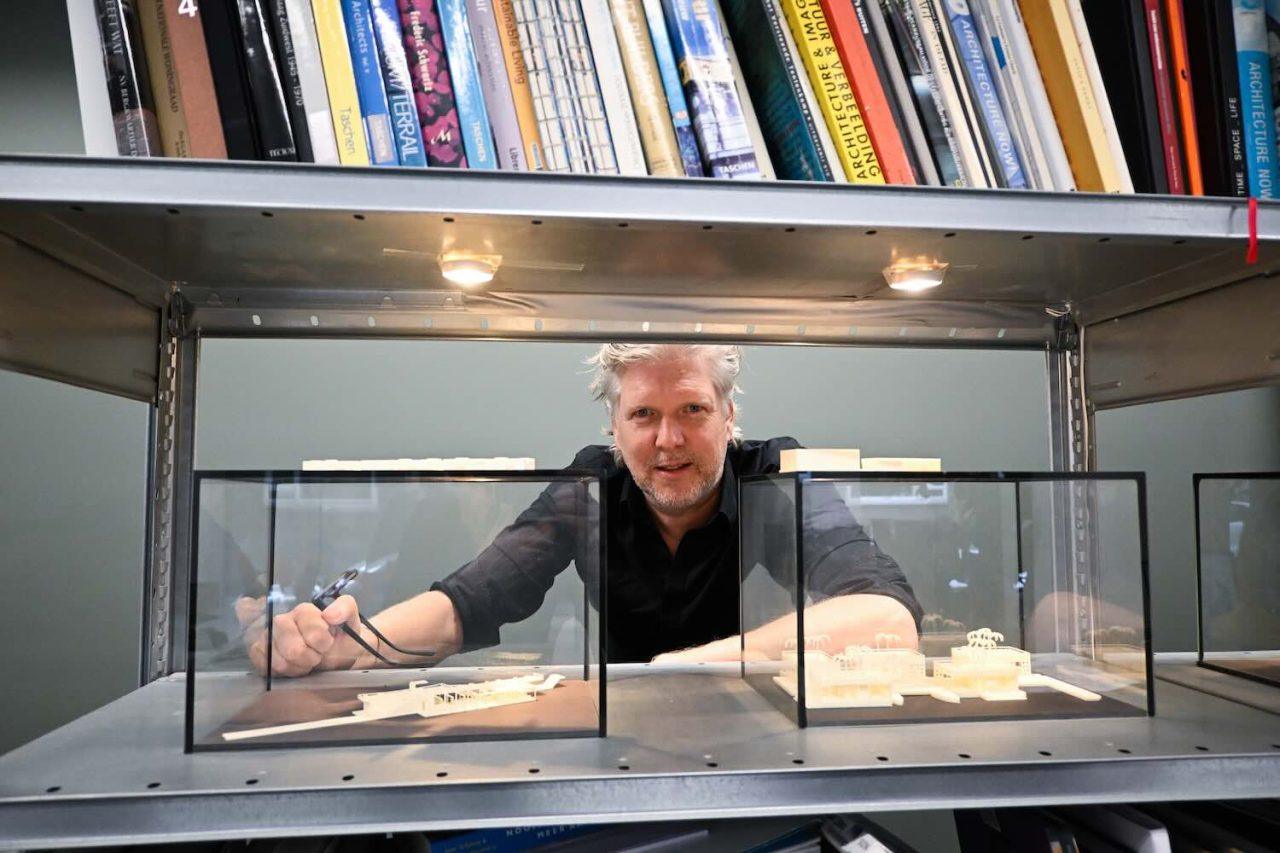
Architect Koen Olthuis and his Waterstudio have specialised in floating homes.
He is convinced that floating high-rise buildings in cities are the future.
‘One of the advantages of floating buildings is that we don’t have to leave them there forever. We can move them after ten to fifteen years,’ he says.
Advanced projects also include luxury hotels in the Middle East, housing for care workers in Norway and a public housing project in Zwolle, with units comprising 45 dwellings each.

However, he generally believes that it is Asia, with low-lying cities such as Manila and Jakarta, that will embrace floating buildings for survival reasons.
‘Europe has become a bit lazy; it doesn’t accept innovations as much as it should,’ he believes.

Martha Vintges and Gert Engbers appreciate the space outside their house, something that is unusual in the densely populated Netherlands. ‘We are sailors, so we really like the water,’ says Martha.
‘We were guinea pigs’
Back in Delft, Martha Vintges and Gert Engbers talk about the challenges they have faced, such as having to send divers under the house at regular intervals to remove accumulated sediment. Because when the building hits the bottom, it can end up on its side. It has also been difficult to find tradespeople such as plumbers and electricians, as they are not used to working on water. Elsewhere, the authorities are wrestling with the regulations – is it a building or a boat, and if so, what applies?
‘We were guinea pigs. The municipality was very proud to have floating houses, but it was us who had to do all the work,’ says Martha Vintges with a laugh.
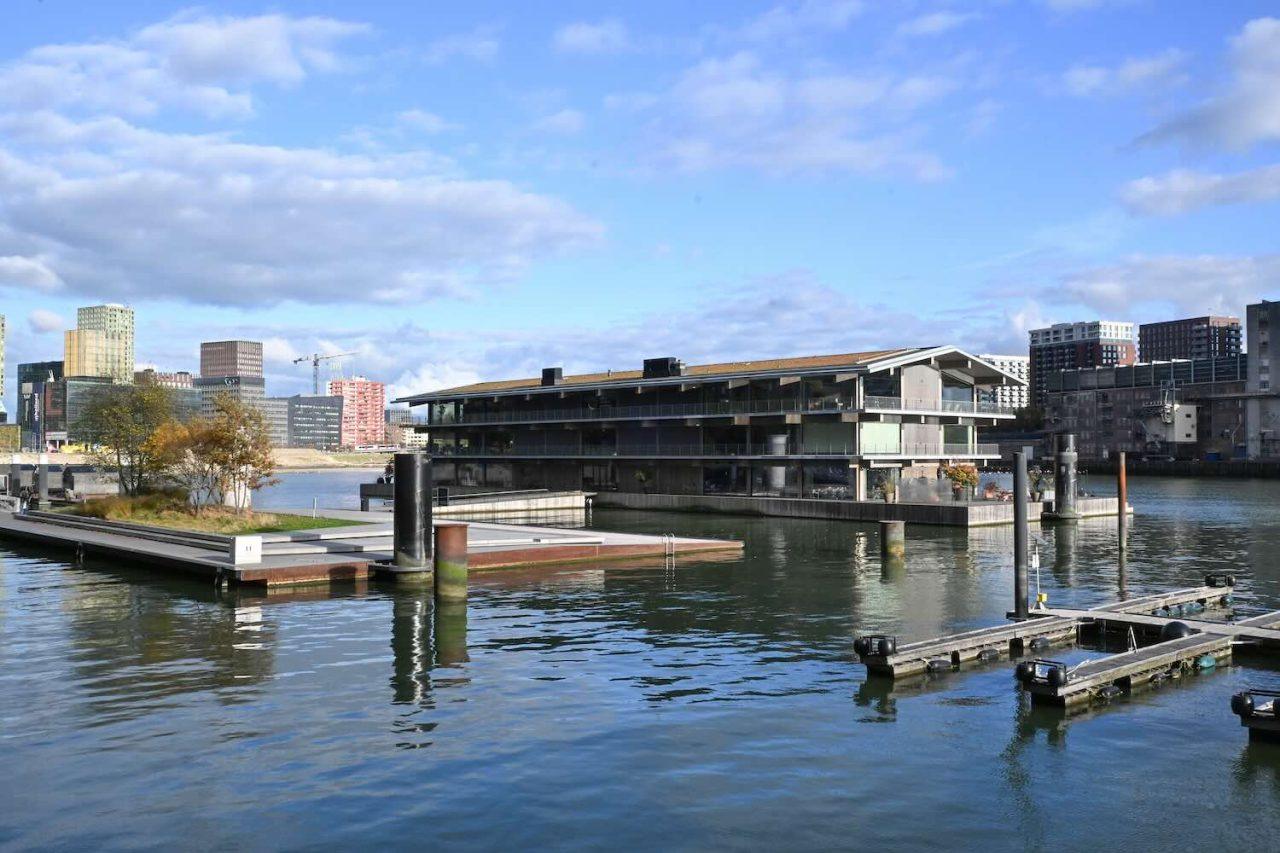
The three-storey office is built to be movable. ‘It is designed to be able to float under a nearby footbridge,’ says Albert Takashi Richters, architect at Powerhouse Company in Rotterdam.
Architect Albert Takashi Richters at the floating office in Rotterdam is uncertain whether the future is fluid, possibly in certain parts of the world.
‘I’ll be honest. Have we built more projects like this? No. Is it smart to build everything on water? No, I wouldn’t say so. So from that perspective, this is mainly a symbolic gesture.’
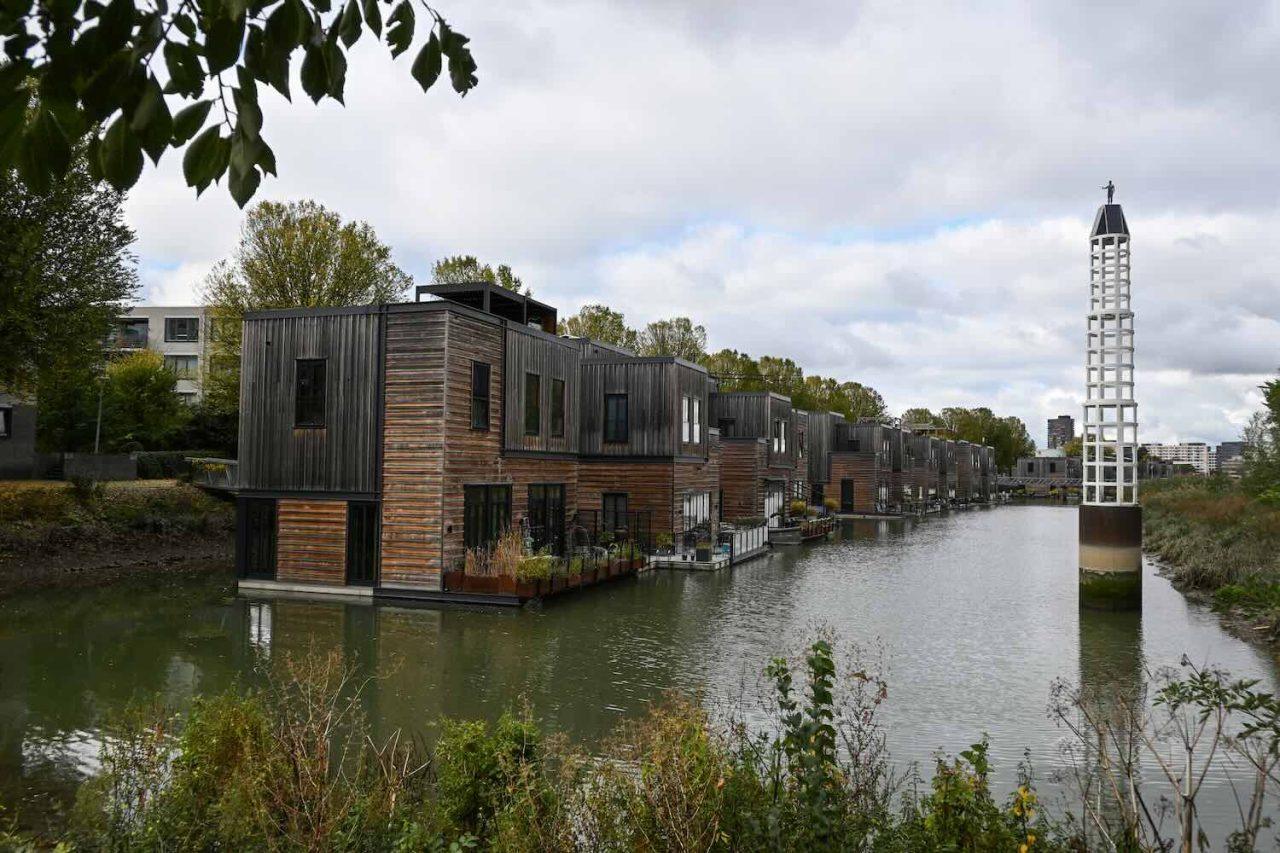
Rotterdam has several floating buildings, including these residences in Nassauhaven.
There are also quite a few floating buildings in Sweden, and not just in the form of houseboats.
They can be found in Nacka, Karlstad, Västervik, Kalmar and Malmö, among other places.
However, the Swedish National Board of Housing, Building and Planning (Boverket) has no information on how many homes are involved or how much interest there is in this type of housing.
Source: Lund University, Boverket




